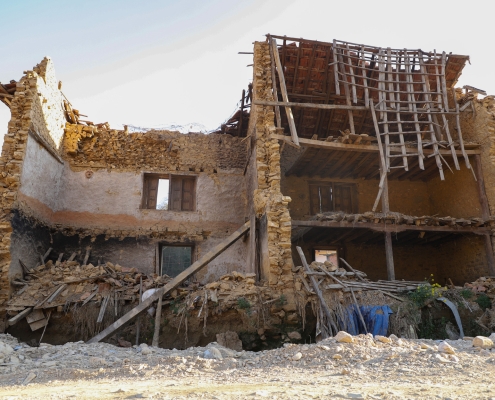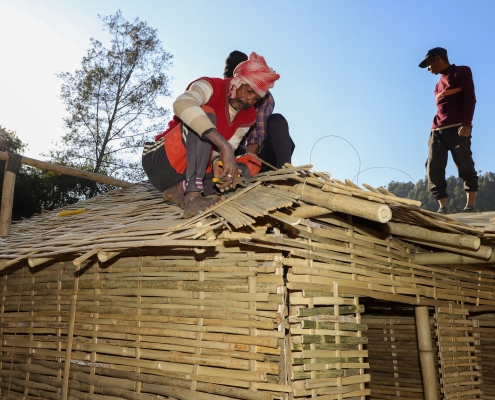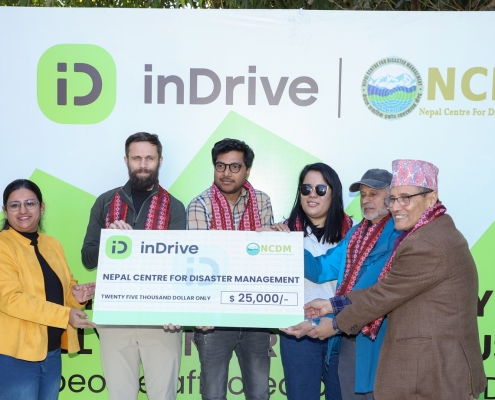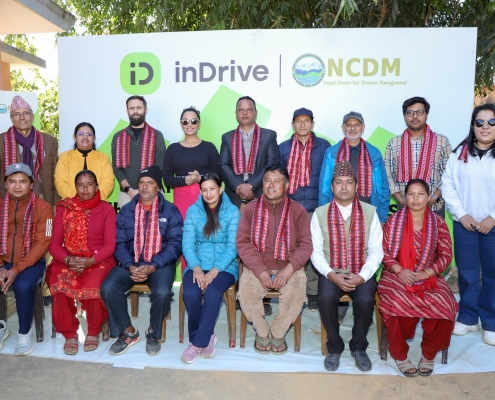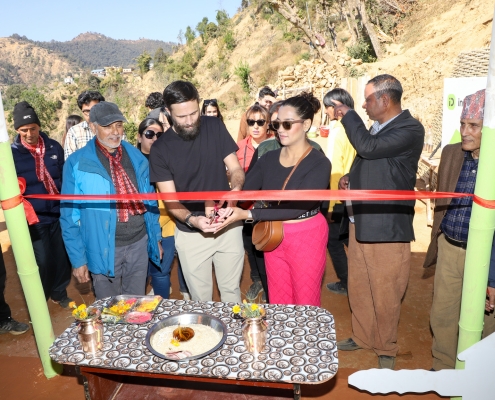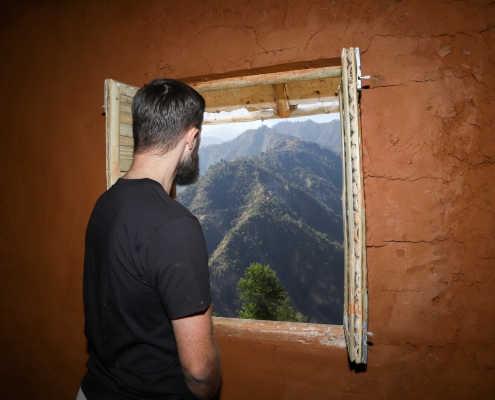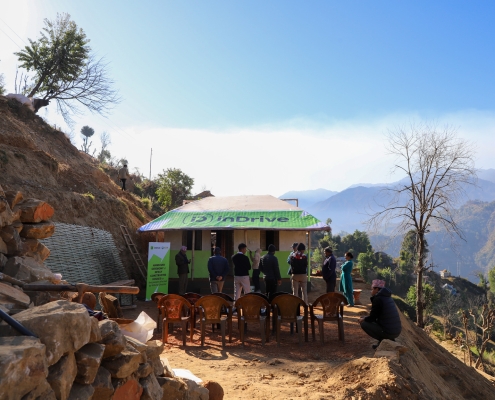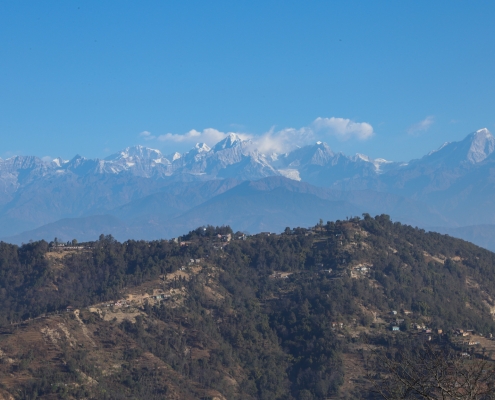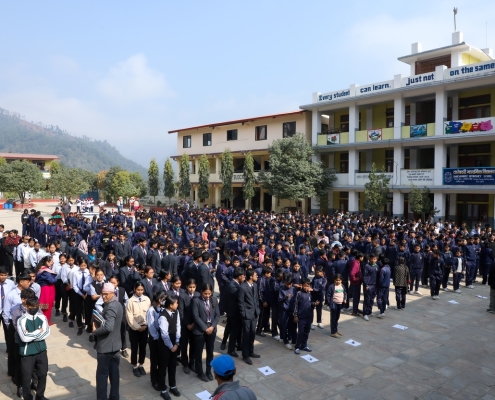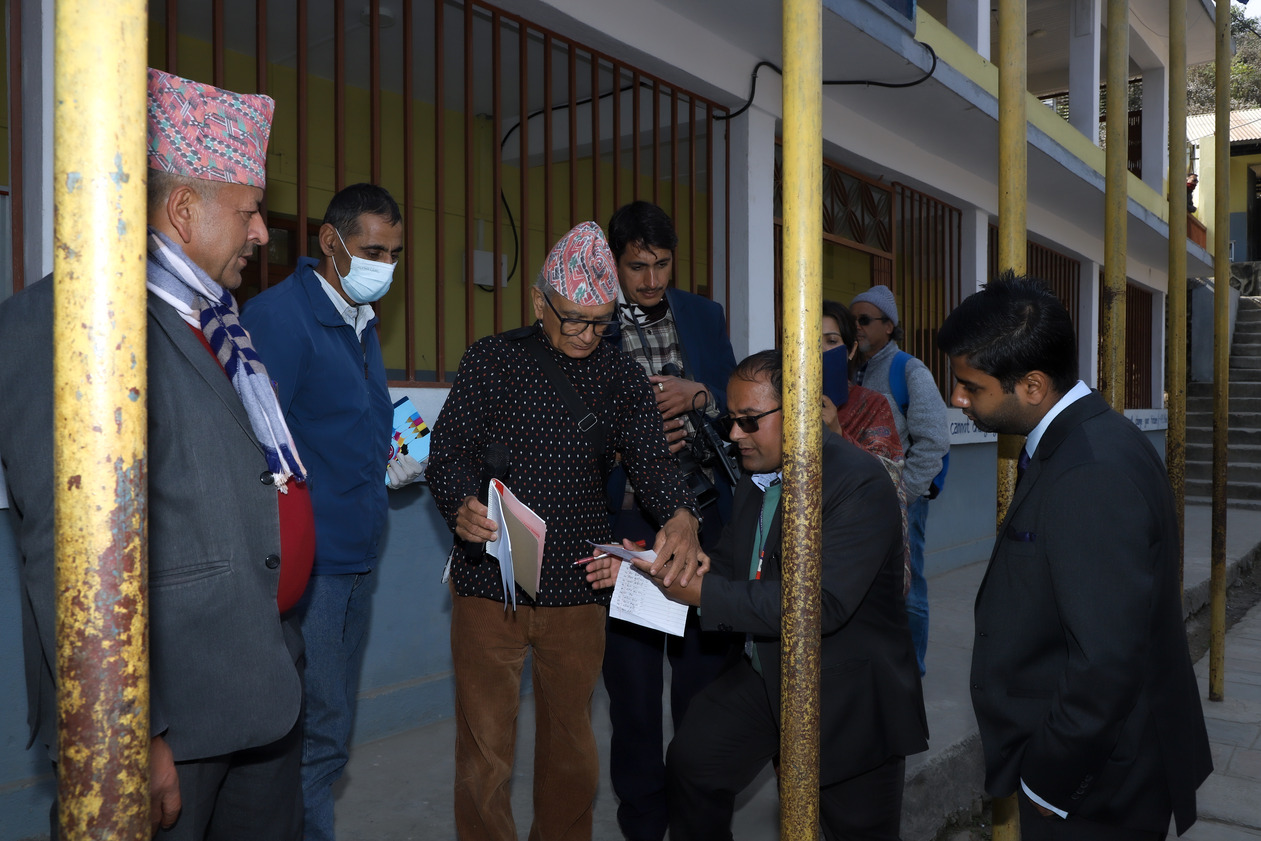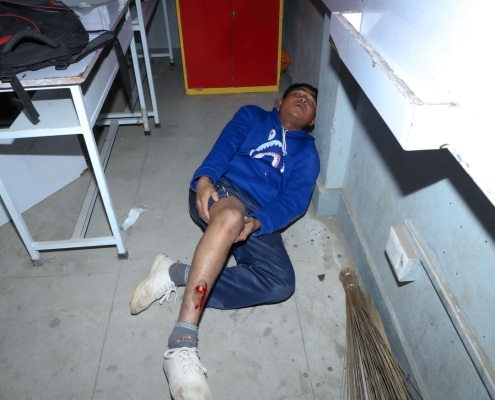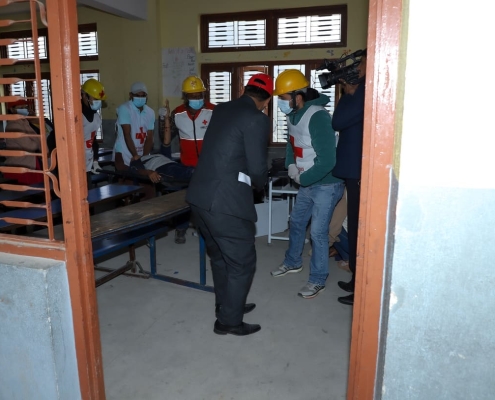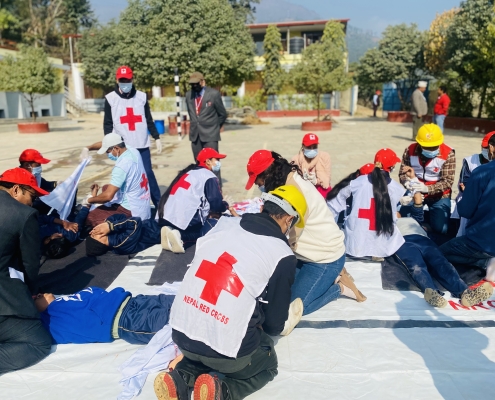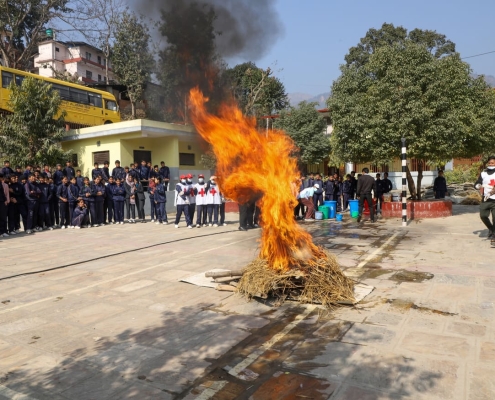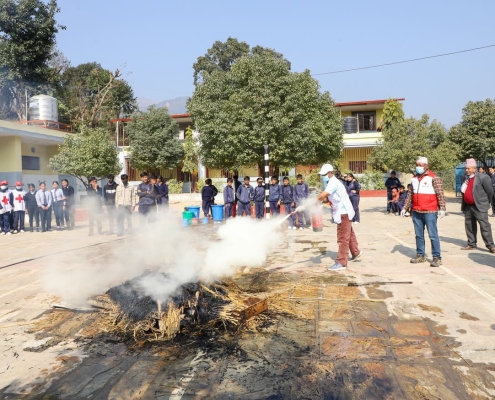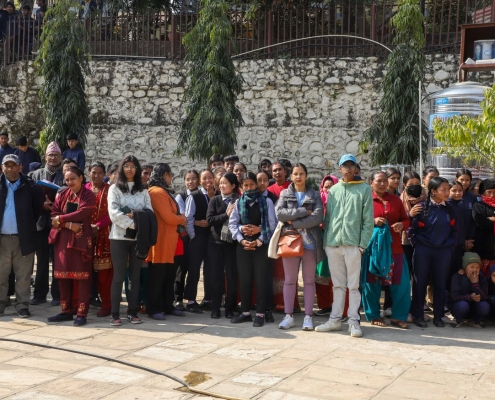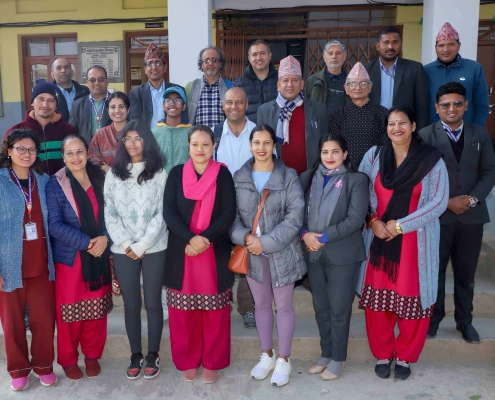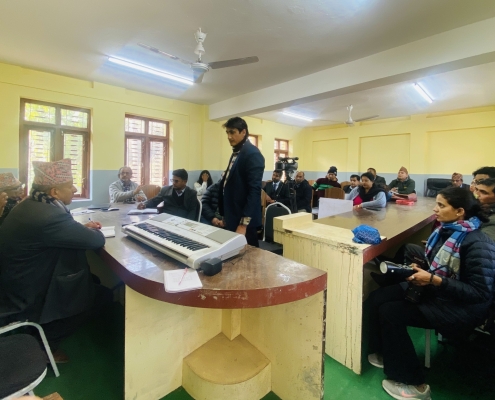नेपालमा विपदको जोखिम, यसको पूर्वतयारी कसरी गर्ने ? बाढी पहिरोको संकेत के हो ? बाढी पहिरो जाँदा सुरक्षित कसरी रहने भन्नेबारे कुराकानी ।
The Nepal Centre for Disaster Management (NCDM) has undertaken a crucial initiative to provide shelter for families affected by floods and landslides in Kavrepalanchok District. This effort has been made possible through the generous contribution of NPR 3,355,500 from the ride-sharing company “Indrive” to NCDM for the construction of temporary houses for affected families. As part of this initiative, NCDM and Indrive recently inaugurated one of the newly constructed temporary shelter and officially handed over the keys to a displaced family.
Three houses are under construction in Namobuddha Municipality and Roshi Rural Municipality of Kavrepalanchok district. The houses have been designed by NCDM Vice President, Dr. Jiba Raj Pokharel, ensuring both structural safety and environmental sustainability. Each home includes two bedrooms, a veranda, a toilet, a dining area, and a kitchen, providing essential living spaces for the affected families. A key feature of these houses is their earthquake-resistant design, using locally available materials such as bamboo and mud. These materials not only make the homes cost-effective and eco-friendly but also provide natural insulation, keeping them warm in winter and cool in summer.
During the handover, representatives from NCDM and Indrive emphasized the importance of sustainable housing solutions in disaster response and recovery. Mark Tully, Asia Pacific General Director of Indrive, emphasized that this initiative aims to bring positive change in the lives of disaster victims, helping them rebuild their future with dignity and security. NCDM officials highlighted that this collaboration reflects the organization’s commitment to supporting disaster-affected communities and contributing to long-term recovery efforts.
On January 23 and 24, 2025 (10th and 11th Magh, 2081), NCDM organized a two-day earthquake emergency evacuation and fire safety drill at Bageshwori Secondary School, Malekhu, Dhading, to enhance disaster preparedness among students, teachers, and staff. Expert trainers from the School of Shelter and Environment (SSE) and the Red Cross Kathmandu led the program. The first day focused on theoretical sessions, where students from classes 6, 7, and 8 learned about earthquake mechanisms, preparedness strategies, and fire safety, including the use of fire extinguishers. Separate orientation sessions were conducted for teachers. The second day featured a full-scale practical drill. Teachers were assigned specific roles, including Incident Commander, Damage Assessment Team, and Search and Rescue Team. The drill began with the unexpected sounding of an earthquake siren, prompting the entire school from class 6 to 12 to evacuate to a designated safe area. Teachers took attendance and reported missing ones to the Incident Commander. Following this, the Damage Assessment Team ensured building safety, the Search and Rescue Team conducted operations, and the Red Cross Dhading and student volunteers performed triage, first aid, and referrals.
The fire safety drill followed, where students practiced extinguishing a fire using available water resources. Then the trainers demonstrated the correct usage of fire extinguishers. NCDM also donated 2 fire extinguishers to the school. The program concluded with a feedback session, during which the headmaster of the school committed to creating a comprehensive School Disaster Emergency Evacuation and Response Plan and conducting regular drills to strengthen preparedness.
Disasters today are affecting people and causing economic losses at rates that are unprecedented and increasing rapidly.By 2050, more than half of world’s 9 billion people will live in large urban centres, most of them in developing countries. The enormity and frequency of disasters will bring furtherchallenges that warrant visionary approaches. The disaster impacts are unevenly distributed; Asia and Africa combined together
take the brunt of nearly 68% of all people killed and 95% of those affected. From 2004 through 2013, disasters have killed 1 million people and affected 2 billion and economic losses from natural disasters now reach an average of US$250 billion to US$300 billion each year. Climate change will exacerbate the problem.
Read More: TWAS news letter Disaster Preparedness
On the occasion of 15th General Assembly of DPNet Nepal, held on March 15, 2024, Prof. Dr. Bishal Nath Upreti, Chairperson of the Nepal Center for Disaster Management (NCDM), was honored with the prestigious DPNet Award. The Award was handed over to Prof. Dr. Upreti, by the Executive Chief of NDRRMA during the program. DPNet, an umbrella organization of various organizations working in the field of disaster management confers awards every two years to commend outstanding contributions in the field of disaster management.
This year’s awards ceremony recognized three remarkable individuals and institutions for their significant efforts in disaster risk reduction. Among them, Prof. Dr. Bishal Nath Upreti stood out for his exceptional dedication and contributions to the advancement of disaster resilience in Nepal. Reflecting on this achievement, Prof. Dr. Upreti emphasized the evolving nature of disasters in Nepal, stressing the heightened intensity and unpredictable effects that often lead to multiple crises. Prof. Dr. Upreti highlighted the urgent need for an Early Warning System in Nepal to mitigate the impact of such disasters effectively. The NCDM extends its gratitude to DPNet for this honor and reaffirms its dedication to advancing disaster resilience in Nepal.
We are pleased to announce the signing of a Memorandum of Understanding (MoU) between the Nepal Center for Disaster Management (NCDM) and the Istituto Nazionale di Oceanografia e di Geofisica Sperimentale – OGS SGONICO, Italy. This collaboration marks a significant step forward in disaster management, with a particular focus on earthquake mitigation.
The MoU, signed by Prof. Dr. Bishal Nath Upreti, President of NCDM, and Prof. Nicola Casagli, President of OGS, outlines a comprehensive framework for cooperation. This framework includes initiatives such as sharing infrastructural facilities, collaborating on research related to earthquake hazard and risk assessment, and jointly developing outreach and early warning systems. The agreement emphasizes the mutual exchange of expertise and resources to address the persistent challenges posed by natural disasters.
This partnership aims to foster a collaborative and proactive approach to disaster mitigation, contributing to the well-being and safety of communities in Nepal and beyond.
NCDM President Prof. Bishal Nath Upreti laid the foundation stone on March 8, 2023, amidst a brief ceremony to build a hi-tech kitchen building based on state-of-art technology for the students of Bageswori High School, Malekhu, Dhading. The total cost of the building is estimated to be NPRs. 20 million. Nepal Hilfe Kulmbach (NHK), Germany has generously funded the building construction through NCDM. Prof. Upreti has been tirelessly working very hard and devoting his precious time to helping the school students by availing scholarships and developing the school’s physical facilities for 40 years. This kind of noble initiative has contributed to the development of education, health, and the environment of Malekhu and the vicinity.
१. पृष्ठभूमि
नेपाल भूकम्प, बाढी, पहिरो, आगलागि, तातो हावा (लू), शीतलहर, चट्यांग, हुरी बतास, असीना, खडेरी, महामारी आदि जस्ता प्रकोपहरुबाट ग्रस्त छ । प्राकृतिक जोखिमहरुका कारण हुने विपद्ले गर्दा व्यापक जनधनको क्षति भईराखेकोछ ।
२. पोखरी उत्खननको औचित्य (Justification for the Pond Construction)
पोखरी उत्खननबाट निम्न अनुसारको फाइदा हुने देखिएको छ ।
२.१. पोखरी उत्खननद्वारा बाढी पहिरोको रोकथाम
पोखरी बनाएको खण्डमा बाढी तथा पहिरो रोकथाम गर्न सकिने भएकोले आज भन्दा २३०० वर्ष अगाडि चाणक्यले आफनू कृति अर्थशास्त्रमा जलाशय बनाउने सुझाव दिएका छन् । यसैलाई अनुसरण गरेर काठमाडौं उपत्यकाका तिनै शहरमा पुखु अर्थात पोखरीहरु बनाएको अझै पनि देख्न सकिन्छ भने जनकपुर लगायत मधेशमा ठूला ठूला पोखरी र पहाडमा आहाल बनाउने प्रचलन थियो । अहिले त्यो परम्पराको परित्याग गरिएकोले पहिरो तथा डुबानको समस्या सामना गर्नु परिरहेको छ । विभिन्न अध्ययनले पोखरी बनाएको खण्डमा बाढी नआउने र आए पनि कम गतिमा आउने प्रमाणित गरेका छन् ।
२.२. पोखरी उत्खननद्वारा पहिरोको रोकथाम
पहाडमा समतल जमिनको उपलब्धता अनुसार साना ठूला पोखरी बनाएको खण्डमा पहिरो रोकथाम गर्न सकिन्छ । विश्वमै सुप्रशिद्ध चीनको थ्रि गोर्ज ड्याममा गरिएको एक अध्ययनले के देखाएको छ भने यसको समिपमा रहेका पहाडमा अवस्थित पोखरीले गर्दा यसमा गेगरको मात्रा कम भएको छ । पहाडको टुप्पादेखि तल सम्म गुरुत्वले गर्दा अति बेगमा पानीको प्रवाह हुने भएकोले पहिरो आउने हो । यस्तो घटना खोल्सामा बढी देखिन्छ । त्यसकारण यस्ता पोखरी खोल्साको माथि, दॉयॉ तथा बॉयॉ बनाउन सकियो भने पहिरोको रोकथाम हुन सक्तछ ।
२.३. पोखरी उत्खननद्वारा डढेलोको रोकथाम
पोखरीको सामिप्यमा तापक्रम कम तथा आद्रता बढी भएको जनकपुर तथा पाटनको पिम बाहमा गरिएका विद्यावारिधि तथा स्नातकोत्तर तहका अनुसन्धान कार्यले देखाएका छन् । जंगलमा पोखरी बनाउन सकियो भने ड‘ढेलो लाग्ने संभावना कम र लागी हाले पनि ड‘ढेलो पोखरीमा भएको पानीको संपर्कमा आएर निभ्ने वा पोखरीको पानीबाट निभाउन सकिने संभावना रहन्छ । यसरी पोखरी खनेको खण्डमा डँढेलोको जोखिम कम हुने र नियन्त्रण गर्न सकिने संभावनालाई नकार्न सकिदैन ।
२.४. पोखरी उत्खननद्वारा प्रदूषणको रोकथाम
गत बर्ष देशमा व्यापक रूपमा डढेलो लागेर प्रदूषण नाटकीय रुपमा बढेको थियो । यति सम्म कि सरकारले आवश्यक काम नभए बाहिर नजाने र घरमा नै रहने सूचना पनि जारी गरेको थियो । पोखरी खन्नाले ड‘ढेलो कम हुने भएकोले प्रदूषण धेरै हुने कुरा नै भएन । यसले मानिसको स्वास्थ्यमा पु¥याउने हानीमा कमि ल्याउ‘छ ।
२.५. पोखरी उत्खननद्वारा चटयाङको रोकथाम
पोखरी भएको स्थानमा रुखहरू अघला हुने र वातावरण आद्र खालको हुने भएकोले वस्तिमा पर्ने चटयाङ जंगलमा पर्न जान्छ । यसले गर्दा चटयाङबाट पनि जोखिम कम हुन जान्छ ।
२.६. पोखरी उत्खननद्वारा जंगली जनावरको रोकथाम
पोखरीमा भएको पानी पिउन पाउने भएको खण्डमा जंगली जनावर वस्तिमा आएर दुःख दिदैनन् । चरा चुरुङ्गिलाई पनि खाद्य तथा पेय जंगलमै पर्याप्त मात्रामा हुन्छ ।
२.६. पोखरी उत्खननद्वारा जलवायु परिवर्तनमा नियन्त्रण
अहिले कोरोना जस्तै सारा विश्वनै जलवायु परिवर्तनबाट पीडित भएको छ । एकै वर्षमा नै नाङ्गा पहाड पनि रुख, बोट, बिरुवाले हरा भरा हुन्छन जसबाट जलवायु परिवर्तन पनि नियन्त्रित हुन्छ । सौन्दर्य पनि बढन जान्छ । पोखरीको वरिपरि पर्यटकलाई विचरण गर्ने अवसर पनि प्राप्त हुन्छ ।
२.६. पोखरीको चौतर्फी फाइदा
यसबाट के थाहा हुन्छ भने पोखरीको चौतर्फी फाइदा हुन सक्तछ । श्रमिक वर्गले काम पाउने हुनाले यसले रोजगारीको पनि सिर्जना गर्दछ । एउटा पोखरी खन्न स्थान अनुसार रु ५००० या कम लाग्ने देखिएको छ ।
२.७. पोखरीको बनोट
पाहाडमा मदेश जस्तो ठूला ठूला पोखरी बनाउन सकिदैन । त्यसकारण टुप्पामा २० फुट वर्गको १.५ः १ झुकाब भएको पिछंधमा ८ फुट बर्ग भएको पोखरी निर्माण गरिएको हो । यसमा १००० घन फुट पानी अट्छ । यसको तीन तिर ढुंगा माटोको तटबन्ध पर्खाल लगाइएको छ र यसको बाहिरको झुुकाब १ः १ राखिएको छ । अहिले बर्दिवास जिल्लाको कालापानी नजिकको बाहुनी झोरामा बनाइएका १०० पोखरीले भारी वर्षा भएको बेला १००००० घन फुट पानी संकलन गर्न सक्तछ । यो पोखरी १ दिनमा ४ जनाले बनाउन सक्छन ।




About NCDM
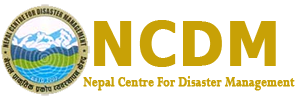
Nepal Centre for Disaster Management (NCDM) was established in February 2002 with an aim to help effectively mitigate the impact of disasters in the country. The Centre is registered in the Kathmandu Distric Administration Office, Government of Nepal. NCDM is also registered under the Social Welfare Council, Nepal.
CONTACT US
Nepal Center for Disaster Management (NCDM)
205, Dhobidhara, Dillibazar,
Kathmandu, Nepal
Telephone: 977-1-4516386
Phone: 977-9851010917
Email: bnupreti@gmail.com, info@ncdm.org.np
URL: www.ncdm.org.np
Articles & Publications
- विपदको जोखिम घटाउन हरेक ४ किमीमा मौसम स्टेशन खोई ?
- Indrive Supports NCDM in Building Homes for Flood and Landslide Victims in Kavrepalanchok
- Earthquake emergency evacuation and fire safety drill at Bageshworee Secondary School, Malekhu
- TO CUT DISASTER RISK, INVEST WISELY
- NCDM Chair Prof. Dr. Bishal Nath Upreti Receives DPNet Award
